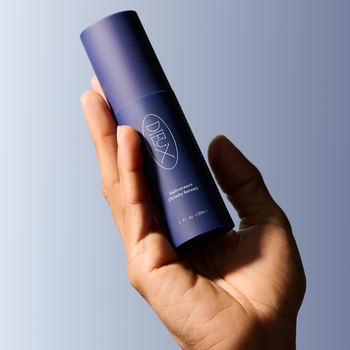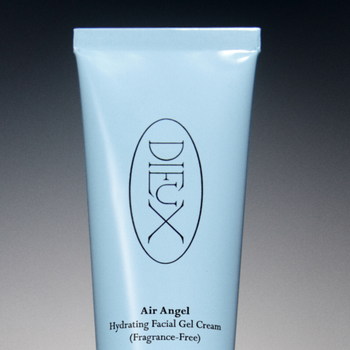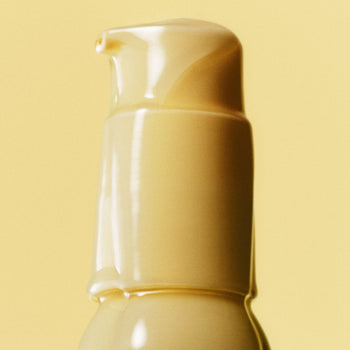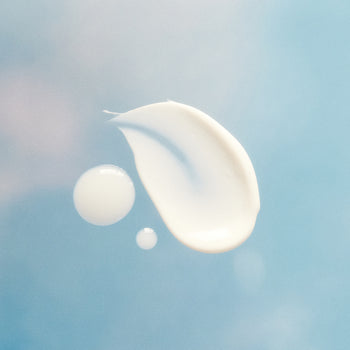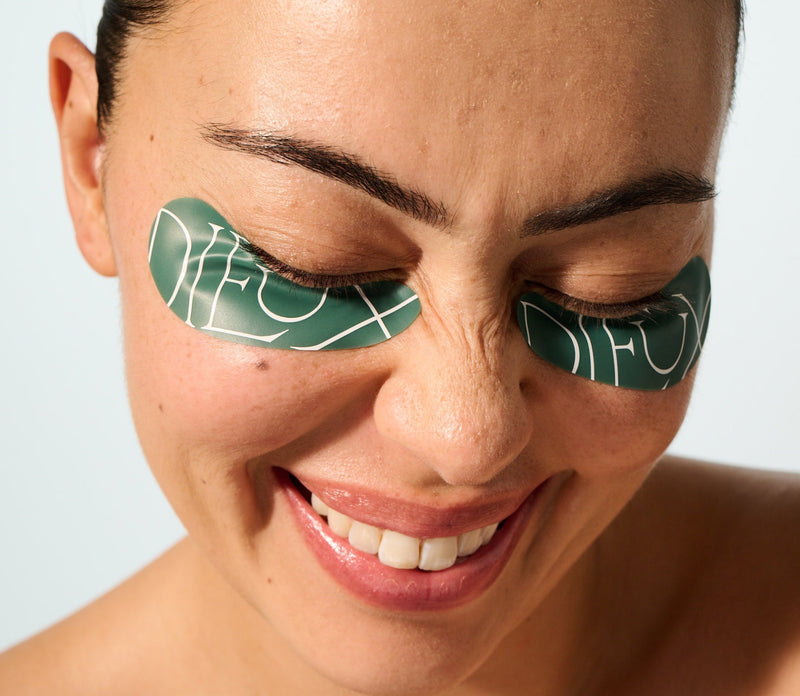
Sunscreen Ingredients: A Guide
Despite endless misinformation circulating online, sunscreen is a necessity if you’re spending time outside. Unlike other daily-use skincare products, sunscreen’s ingredients have yet to become household names. Let’s spend some time getting to know them, and how to select a sunscreen formulated for your needs.
What Is Sunscreen?
Sunscreens are in a different league to cosmetics in the United States, this is because they aren’t cosmetics at all, they’re drugs! While cosmetics will use the term “active ingredient” in marketing, in the sunscreen space, it’s a little different. “Active ingredient” in the sunscreen world means you’re using a compound approved by the FDA to make claims around protecting your skin from UV radiation.
But, just using an active ingredient isn’t enough on its own (no, you cannot mix zinc oxide and beef tallow and call it sunscreen). In order to claim something is a sunscreen you need to have a formula that has gone through rigorous testing standards. Manufacturers must register the formulas with the FDA and those facilities must follow strict Current Good Manufacturing Practices (CGMP). You can find all properly registered sunscreens in this database.
If you haven’t done all those things? Your product is not a sunscreen. A reminder that in Europe and Korea and markets where sunscreen is a “cosmetic” there are guidelines to launch as well. There is no market where you can claim zinc oxide powder mixed with an oil is sunscreen, so don’t do that (please). If you’re familiar with “boosters” in sunscreen that act similarly to sunscreen actives and are wondering where we’re discussing this issue, keep reading!
Mineral vs Chemical Sunscreens
Another way to say this is inorganic (mineral) sunscreens versus chemical (organic) sunscreens. While chemical sunscreens have carbon-containing molecules that absorb light, mineral sunscreens are made of… well… minerals. While zinc oxide can be made synthetically, it can also be derived from the earth.
Contrary to popular belief, mineral and chemical sunscreens function similarly. Due to rampant misinformation, there’s the belief that mineral filters were physical blockers of UV rays (that they scattered across the skin and “reflected” UV rays away from it), whereas chemical sunscreens absorb them. But that’s been proven not to be the case.
No matter the type, any sunscreen functions by absorbing UV rays and converting them into a small amount of heat before the radiation can harm your skin. Mineral sunscreens do reflect a little visible light, but not a significant amount.
Mineral and some chemical filters are capable of broad-spectrum protection, meaning they guard against a wide range of UV radiation (like UVB and UVA rays).
Overall, chemical formulas can be more elegantly formulated and be easily spread across skin, causing less friction and roughness. You can also get some incredible textures, making them a delight to wear. However, some individuals with sensitive skin might experience irritation, especially if you have an allergy.
To learn more about specific active ingredients, check out our Sun-Screener!
What is SPF?
Now that we have the ingredient basics down, let’s talk about SPF. What does that number mean? It’s the abbreviation for Sun Protection Factor. It’s primarily a measure of how well a sunscreen protects your skin from UVB rays. Remember, both UVA and UVB are dangerous to skin.
A sunscreen’s SPF rating indicates how long the sun’s UV rays would take to redden your skin. Important to note, you need to use the recommended sunscreen amount to achieve that “SPF” number on the bottle. For context, that’s about 1/4 a tsp for just your face. Once you’ve applied the correct amount of say, an SPF 50, the sunscreen should protect your skin 50 times better than if your skin didn't have sunscreen on.
Which brings us to broad spectrum, what does that mean when you see it on a sunscreen bottle?
Broad Spectrum
Broad spectrum, in the U.S. means your sunscreen is protecting you from a level of both UVA and UVB rays. This is why we recommend looking for broad spectrum sunscreens with at least an SPF of 30. To claim broad spectrum, the product's UVA protection must be proportional to its UVB protection. In layman’s terms, there needs to be a certain level of UVA protection in relation to UVB.
What are Boosters?
Sunscreen boosters are extra ingredients that aren’t UV filters/actives themselves, but help the UV filters work better.
Some boosters make sunscreen spread more evenly on your skin. Others help keep the formula stable with antioxidants. Some even absorb UV rays—just like regular chemical sunscreen filters.
Take butyloctyl salicylate, for example. It’s a common booster that can help certain chemical filters (like avobenzone) dissolve better in a formula. It can also absorb UV rays. Is that always why it’s used? No. But when used in higher amounts, it starts acting more like a sunscreen filter.
Here’s the important part: some boosters are very similar in structure to chemical sunscreen filters. (Scientists call these “analogues.”) That means they can absorb UV rays just like regular filters do—making them functionally the same.
So what’s the catch? The FDA doesn’t count these boosters as official sunscreen actives. Because of that, brands can use more of them than they’d be allowed to if they were labeled as UV filters. That raises questions about safety, since the “real” filters had to go through lots of testing and are regulated to be at certain percentages. There’s also the potential for allergies.
If a brand is using a booster that acts like a UV filter, we think the amount should be disclosed. That way, people can better understand what’s in their sunscreen and how it works.
And in our opinion? If your formula includes a UV-absorbing booster, pending the percent, it’s not quite a “100% mineral sunscreen.” Consumers deserve to know that.
How To Choose the Right Sunscreen For Your Skin
Instead of making decisions based on skin type (both mineral and chemical sunscreens can cause sensitivity for different people), selecting a sunscreen really comes down to personal preference. We recommend thinking about the following before picking up a new sunscreen:
- Finish. What feels best on your skin? Since you’ll always be finishing your am skincare routine with sunscreen, the difference between a more matte finish from mineral-based formulas and the slipperier, shinier finish of a chemical-based formula makes a difference.
- Moisturization. This plays off finish but if a formula is more fluid and has, for example, alcohol, it’s probably going to dry down more matte and be less rich than a sunscreen that has lots of oils or butters. Texture matters with sunscreen—look at the inactive ingredients and finish claim to make a more informed decision. A reminder that zinc oxide can be drying and any formula can have ingredients to help with the finish so it’s really about reading the marketing and the ingredient lists!
- Allergies. You might be allergic to zinc oxide, or an ingredient like oxybenzone. Know your skin before selecting, and be sure to patch test before slathering on completely. If you’re allergic to chemical filters, you may be allergic to boosters!
- Age. When it comes to application on children, mineral sunscreen is best as kids’ skin barriers haven’t fully formed yet (making it less safe for them to absorb foreign ingredients). Before 6 months, it’s recommended to use no sunscreen and opt for protective clothing and shade.
Sunscreen Ingredients To Avoid
The gag is there aren’t any, barring allergies and personal preference. The safety of sunscreen has been questioned for years despite the data, experts and regulatory bodies saying the same thing: sunscreen is safe. A reminder, experts also share that protective clothing, seeking shade at peak hours and being smart about the sun is important! It’s not just about wearing sunscreen!
When it comes to safety and sunscreen, it’s really important to understand regulations and toxicology. Sunscreens are regulated, and each active ingredient has a maximum dose it can be formulated with.
For example, in the U.S. you cannot use avobenzone above 3% in formulas, in Europe, anything above 5% is prohibited. Does this mean it’s unsafe? No! It means it’s been rigorously tested for safety and aggregate exposure (AKA using multiple products over and over again for weeks and months using this ingredient), along with potential endocrine disruption. This means that in the range of 0-5% you can feel very safe using the product. If you’re curious on toxicology, we had the pleasure of speaking to an expert toxicologist.
Now, it is important to note that some sunscreen filters are being phased out. And, in some cases, sunscreens do get banned. The good news? Chemical sunscreens that have long been demonized like octocrylene, homosalate and avobenzone are not banned because they are safe. While it would be nice to get new sunscreen filters approved in the United States (innovation leads to better products in most cases), the reality is, sunscreen is good for your skin. The best sunscreen is the one you use often.
If you’re wondering about the environment, keep scrolling to our FAQs. There is a lot of bad press out there about some ingredients, with no conclusive evidence to back it up (which should always be our main source of truth).
We’ll be writing a deep dive on where sunscreen misinformation comes from soon, so keep a look out.
In Conclusion: Sunscreen Is Good, So Is Shade!
No matter how skin may react to a particular sunscreen, not wearing it if you’re outside with exposed skin when the UV index is at or above 3, you’re gambling with your skin. A reminder, you can also opt for UPF clothing (clothing that protects skin), shade or not going out at peak UV index hours.
Continuing education: different forms of UV
-
UVB. Wavelength: 280-320. Short-wave ultraviolet light that causes sunburn, plays a major role in skin cancer, and contributes to photoaging.
- UVA II. Wavelength: 320-340. The shorter half of the UVA spectrum. Penetrates skin more deeply than UVB and contributes to DNA damage and aging.
- UVA I. Wavelength: 340–400. The longer part of UVA. Penetrates deeper into the dermis than UVA II plays a large role in photoaging and pigmentation.
- HEV. Wavelength: 400–500. High-Energy Visible light (also called 'blue light'). Comes from the sun and a very minimal amount comes from screens (not enough to cause damage). May contribute to pigmentation and oxidative stress.
At Dieux, we know sunscreen is good, but American sunscreen can do better. If you're a like-minded brand ready to champion newer, more innovative filters, smarter formulas, and more transparent education, email us at sunscreener@dieuxskin.com. Let’s advocate for change together.
FAQs
Why is sunscreen important?
It’s not so much sunscreen that’s important, but that protecting your skin is critical. The sun is a wonderful thing, it’s responsible for life on earth! It also releases UV radiation. With global migration, holidays and much more extended sun exposure than our ancestors were used to, skin cancer is on the rise. In addition to life-threatening skin conditions, as a skincare company, it’s important to us that you protect the integrity of your skin. Sunscreen helps do that.
How do you know if you have a sunscreen allergy?
There are two kinds of allergies when it comes to sunscreen, allergic contact dermatitis and photoallergy. Allergic contact dermatitis happens when an allergen causes a reaction in the skin. Photoallergic contact dermatitis occurs when UV radiation leads to allergen formation (aka that UV radiation creates a reaction). The symptoms include an itchy rash, welts, blisters and/or inflamed skin. In both cases it can take up to 72 hours for symptoms to appear.
Important to note that only a few filters are shown to be potential allergens in the United States. Internationally, the newer and more innovative sunscreen filters do appear to have better allergy profiles.
Can you use Deliverance with sunscreen?
Absolutely! Any antioxidant rich serum is great to pair with sunscreen. Same goes for moisturizers and zinc oxide-based sunscreens that can be quite drying.
My tinted moisturizer has SPF in it. Can this replace my current daily sunscreen?
It depends! While lots of skin tints on the market now feature SPF, it’s challenging to get the required ¼ of a teaspoon on your face without a tint looking cakey. It’s possible, but it’s something to be aware of. We recommend using SPF 30 with broad spectrum protection. If you can’t get enough of your tinted sunscreen on your face to get the stated protection on the bottle (if you use less, you risk getting less protection) layer underneath a sunscreen with similar filters.
Are there any UV filters or boosters that can clog pores? Which sunscreen is best for acne-prone skin?
If you’re allergic to UV filters you may get a reaction, but the ingredients themselves are unlikely to “clog pores.” Looking at textures and the full ingredient list is a great way to determine if something will break you out. If richer creams tend to be a no-no for you, a thick, rich mineral or chemical sunscreen might not be the best option! People have allergies to mineral and chemical sunscreens so it’s important to observe how your skin reacts. If you’re allergic to chemical sunscreens, you may have an allergic reaction to boosters in mineral formulas.
How should I choose between chemical, mineral, and hybrid sunscreen? Which one is “the best”?
As long as your sunscreen is broad spectrum, at least 30 SPF, and is applied regularly, there is no wrong answer here. It’ll all come down to personal preference!
Why doesn’t this sunscreen checker consider potential environmental effects of each formula?
From this article on the Guardian, we agree with renowned reef scientist Terry Hughes:
“The three main threats to coral reefs are global warming, overfishing and coastal water pollution,” says Prof Terry Hughes, former director of the Australian Research Council Centre of Excellence for Coral Reef Studies at Queensland’s James Cook University, and one of the world’s leading coral reef experts. “Coral bleaching is triggered by rising temperatures due primarily to burning fossil fuels. We have already seen three global-scale coral bleaching events due to record-breaking heatwaves, in 1998, 2010 and 2015–2016, which affected 50-70% of tropical reefs. Even the most remote reefs, far from mass tourism or sunscreen, are affected by global warming. There is no scientific evidence that use of sunscreens by people has a harmful effect on coral reefs.”
The studies looking at coral reefs used extremely high levels of chemical sunscreen filters to bleach reefs. When you put high levels of zinc oxide next to reefs, they also bleach reefs. Dr. Michelle Wong has many posts dispelling this harmful myth that uses fear (and your good nature) to sell you sunscreen.
Lastly, Europe considers zinc ecotoxic. It’s a more robust question and “reef safe” sunscreen doesn’t mean much. If you’re wondering why certain regions ban certain filters, politicians aren’t scientists, and don’t always listen to experts. If you are swimming near coral reefs our recommendations is to wear wetsuits and protective clothing if you’re concerned!
Where did you get this information?
All of our sources are linked or at the bottom of our post!
